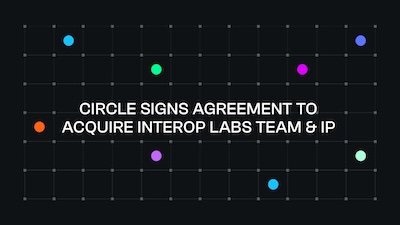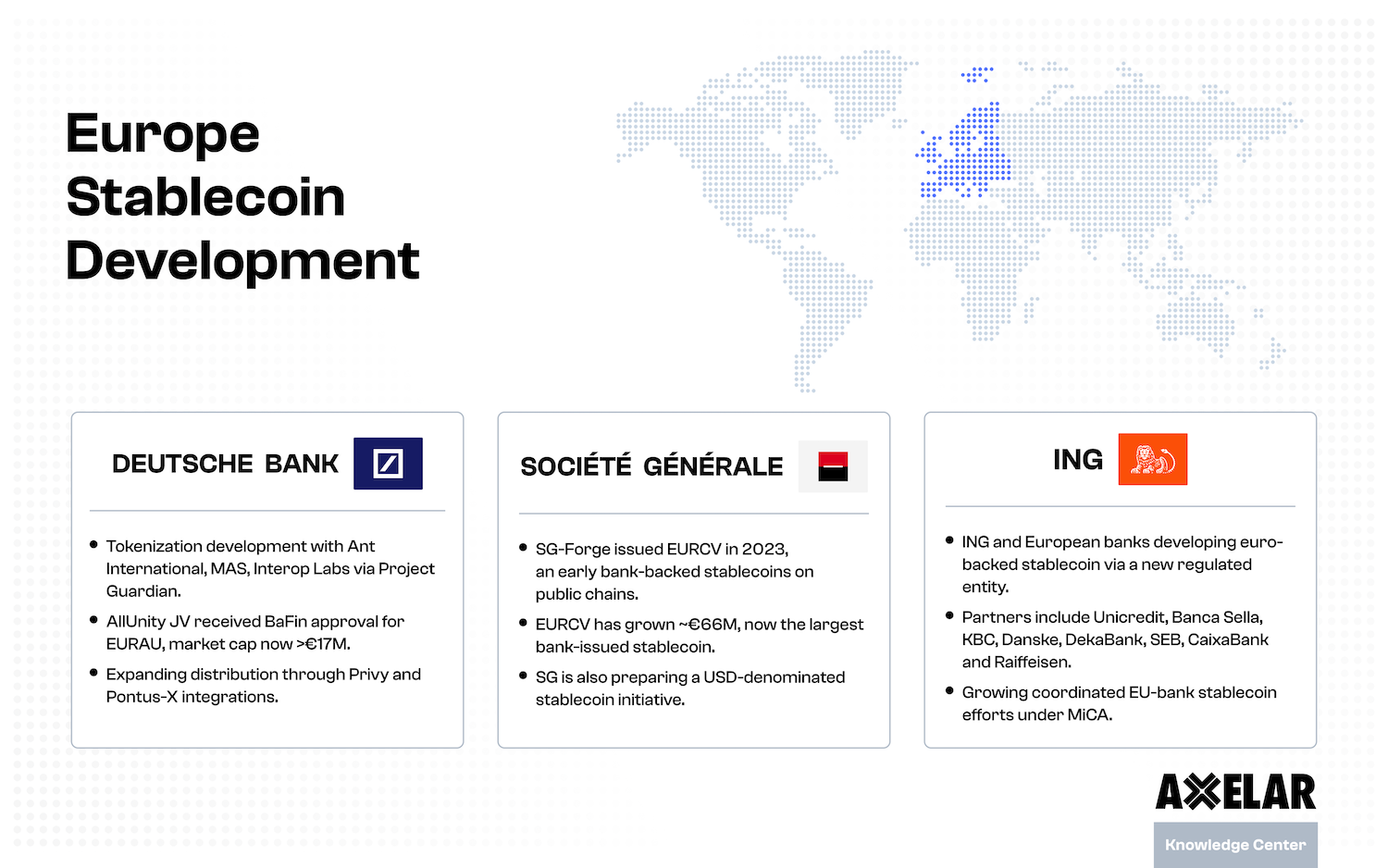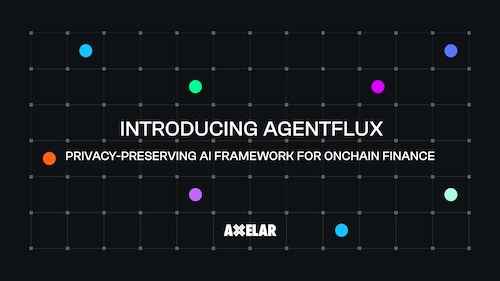Exploring Cross-Chain Solutions: How to Bridge Into Polygon
Table of Contents


In the evolving world of Web3, the need for cross-chain interoperability has become evident. As diverse blockchains emerge with their own unique protocols and rules, the challenge of communicating and transacting between them creates a complex landscape. Cross-chain bridges are one of the most important pieces in achieving this interoperability. These bridges serve as connectors between different blockchains, allowing assets and information to move seamlessly between various networks.
This concept of interoperability is well-embodied in the Polygon ecosystem as well, which has experienced a meteoric rise as a "layer-2 blockchain" in the Ethereum ecosystem, due to its advanced scalability and compatibility solutions. As a protocol for building and connecting Ethereum-compatible blockchain networks, Polygon's growth showcases the necessity of cross-chain interoperability for successful layer-2 blockchains. The connections facilitated by bridges in Polygon's ecosystem accelerate transactions and offer cost-effective solutions, democratizing access to the ecosystem’s vast possibilities.
Here's a detailed overview of Polygon bridges and the effective ways to connect with the Polygon ecosystem.
What is Polygon?
Polygon, previously known as the Matic Network, is a layer-2 scaling solution for the Ethereum blockchain that distinguishes itself via a multichain approach. It aims to provide faster and more efficient transactions by creating a framework that supports various scaling solutions, including Plasma chains, ZK-Rollups and standalone chains.
Ethereum, despite being one of the most widely used decentralized networks, has faced challenges related to scalability, slow transaction speeds, and high gas fees. These issues can lead to a sub-optimal user experience and hinder the adoption of decentralized applications (dApps).
As a response, Polygon has quickly emerged as one of the most sought-after solutions, offering an alternative that enhances Ethereum's capabilities. By facilitating seamless interactions between various blockchain protocols, Polygon's scalable framework allows for efficient multichain development, lower transaction costs and faster processing times. Its ability to integrate different scaling technologies makes it a versatile and attractive option for developers and users alike.
With a pool of features, applications of all kinds have found a robust and scalable environment within Polygon. Be it the open-source liquidity protocol Aave, decentralized exchange Quickswap or DeFi aggregator 1inch, a plethora of applications have capitalized on Polygon's low-cost and high-speed transactions, facilitating a smoother user experience and broader accessibility.
Interoperability within Polygon is achieved through its extensive bridging mechanisms. It doesn't merely provide solutions for scaling Ethereum but creates a broader interconnected ecosystem. To enable users to bridge to and fro the Polygon ecosystem, it has launched multiple native bridges. The bridges allow different blockchains, both Layer 1 and Layer 2, to interact seamlessly, permitting the secure and efficient transfer of data and assets across chains. The bridges act as vital connectors, ensuring that diverse blockchains can operate in a cooperative and complementary manner, thus enhancing the overall functionality and user experience.
Cross-chain Polygon bridges
Over the years, Polygon has launched three native bridges predominantly focused on connecting Polygon with Ethereum, enabling users to be a part of the Polygon ecosystem.
The bridges play a vital role in enhancing functionality and user experience and offer a variety of use cases.
Polygon PoS bridge
The Polygon PoS bridge was launched as part of the network's shift to a more scalable and efficient architecture and quickly became a vital component of Polygon's multichain Ethereum scaling solution. Utilizing the proof-of-stake consensus mechanism, the bridge enables users to transfer ERC-20 and ERC-721 tokens between the Ethereum mainnet and the Polygon network. Transactions via the Polygon PoS Bridge are generally faster and more cost-effective than Ethereum's mainnet, making it a viable option for many users.
The bridge ensures that there is no change to the circulating supply of your token when it crosses the bridge, as the tokens that leave the Ethereum network are locked, and the same number of tokens are minted on Polygon PoS as a pegged token (1:1). Similarly when the tokens are bridged back to Ethereum, tokens are burned on Polygon PoS network and unlocked on Ethereum network during the process.
The PoS bridge offers faster and more cost-effective transactions by employing a set of validators to confirm the legitimacy of the transactions. As these validators stake their own assets as collateral, they have a financial incentive to act honestly, enhancing the security of the bridge. With hundreds of millions of dollars in TVL, Polygon PoS is one of the most popular bridges.
Following the launch of the new zkEVM bridge, which comes with significant UX improvements, the Polygon PoS bridge is also set to receive fresh UX upgrades, making it easier for users to navigate through and use the bridge.
Polygon Plasma bridge
The Polygon Plasma bridge, on the other hand, is built upon Plasma technology, focusing on the mass transfer of assets from the Ethereum mainnet to the Polygon network. The Plasma bridge places an emphasis on security and uses a series of smart contracts to facilitate transactions. This bridge involves a more complex mechanism that includes Merkle trees to batch transactions and allows for more scalable solutions.
A limitation of the Plasma bridge is the seven-day withdrawal period required to move assets back to the Ethereum mainnet, potentially causing liquidity concerns for some users. Nonetheless, the Polygon Plasma bridge reflects a more complex and secure approach to bridging assets between chains. Its unique characteristics make it suitable for large transactions where security, scalability and compatibility are paramount, especially for developers.
In 2021, Polygon reported that they had paid $2 million in bounty to whitehat hacker and bounty hunter Gerhard Wagner, the then-highest bounty paid in the ecosystem, for discovering a security vulnerability. Polygon’s Plasma bridge has a security exit mechanism that involves burning tokens that have been requested to be withdrawn to mainnet. Wagner found a security vulnerability that could let malicious hackers bypass the bridge’s exit mechanism, which could have put funds amounting to $850 million at risk. However, the vulnerability was quickly patched before any user funds were lost (Source: Decrypt).
Plasma bridge usually ranks second to PoS bridge in TVL, also with hundreds of millions of dollars locked.
Polygon zkEVM bridge
Following the mainnet launch of Polygon zkEVM in March 2023, Polygon launched the Polygon zkEVM bridge in April 2023. Polygon zkEVM is Polygon’s Ethereum-compatible zero-knowledge scaling solution. While Polygon PoS and Plasma create a sidechain that runs parallel to the Ethereum mainnet, Polygon zkEVM, on the other hand, uses a ZK-rollup architecture that leverages zero-knowledge proofs to provide a Layer 2 solution on top of Ethereum.
The Polygon zkEVM bridge offers all the features and security provided by the Polygon PoS Bridge, along with a variety of improvements, especially in UX. With the zkEVM bridge, users will experience fast transaction finality, with withdrawals on Ethereum possible in 30-60 minutes. Moreover, the bridge also expands support to ERC-777 tokens.
Unlike other bridges, it is powered by zero-knowledge technology and governed entirely by smart contracts on Ethereum and Polygon zkEVM, ensuring enhanced security. The bridge introduces a significant UX improvement by automating token mapping, eliminating the hours or days typically required for this process.
Following the success of Polygon zkEVM, which is now being used by numerous applications and platforms, Polygon is planning to merge the PoS chain with zkEVM (Source: Yahoo Finance).
Additionally, Polygon is soon bringing Polygon Miden, which is a zero-knowledge rollup running on the Miden virtual machine. With Miden, anyone can build novel applications and explore beyond the EVM while retaining the security of Ethereum. Polygon Miden prioritizes ZK-friendliness over EVM compatibility, enabling it to offer features and benefits that are not available on Ethereum. Despite being optimized for zero-knowledge-proof generation, Miden provides all the features one would expect from a regular VM.
Below are some of the key differences between the PoS, Plasma and zkEVM bridges by Polygon.
Polygon bridges: Security, speed & use cases
Polygon PoS bridge
Polygon Plasma bridge
Polygon zkEVM bridge
Consensus mechanism
Proof-of-stake consensus algorithm
Plasma technology
Zk-rollup technology
Speed
Typically offers faster transactions
May involve more complex processes, slower
Fast, due to efficient zero-knowledge proofs
Withdrawal period
Allows relatively quick withdrawals
Requires a seven-day period to move back to Ethereum
Extremely fast; withdrawals on Ethereum possible in 30-60 minutes
Security
Relies on validators' financial incentives for honesty
More robust due to Merkle trees and smart contracts
Enhanced by zero-knowledge proofs
Use cases
Favored for general token transfers, efficiency, speed
Preferred for maximum security
Enhanced interoperability, scalable dApps
Bridging into Polygon beyond native bridges
The Polygon bridges have been battle tested for security and scalability, but they are limited in the number of chains and assets they support. Many users looking to bridge to other chains have chosen Axelar, which connects the Polygon ecosystem to more blockchains, more securely, than any other cross-chain network. With Axelar, connections are universal, and users can seamlessly swap their tokens across supported chains. At the time of writing, Axelar supports 45+ blockchains, including Polygon, Ethereum, Arbitrum, Avalanche and many Cosmos chains.
Axelar was also one of the early adopters of Polygon Supernets, which allow anyone to create high-performing, EVM-compatible and customizable app-chains. With Axelar, these app-chains can leverage interoperability, functionality and liquidity across the Web3 ecosystem. As Polygon Supernets create an interconnected ecosystem, Axelar expands the interoperability of Polygon Supernets for users across gaming, enterprise, NFTs & DeFi.
Take a look at Polygon bridging activity on axelarscan.io.
Beyond bridging with Axelar
While these native bridges are a secure interoperability solution to connect with the Polygon ecosystem, they are not ideal for every use. Axelar General Message Passing (GMP) enables developers to build on any Axelar-supported chain and call a function on any other connected chain to utilize the best features of multiple chains.
Axelar is currently powering hundreds of applications through GMP, one of which is Squid, a cross-chain swap and liquidity routing protocol. Squid enables the swap of any token across supported chains in just a single click. Therefore, users can participate in multi-chain DeFi, play a game on any chain and buy NFTs from any marketplace without downloading multiple wallets or combing multiple platforms.
Here is detailed information about Squid’s cross-chain capabilities and how developers can use the Squid SDK to make their applications cross-chain.
The future of interoperability
As the Web3 landscape matures and layer-2 solutions continue to flourish, the requirement for stable and efficient interoperability solutions has never been more pronounced. Stable bridges connecting layer-2 blockchains are vital for the secure, quick and cost-effective movement of assets.
Polygon is one of the many blockchains that Axelar connects through GMP, enabling seamless interoperability. Offering secure cross-chain communication with GMP, Axelar enables endless possibilities and abundant use cases for an interoperable future. With the recent integration of Cosmos, Axelar GMP connects 45+ blockchains at this writing, including Avalanche, Base, Binance, Ethereum, Fantom, Linea, Moonbeam and Polygon.
Interested in using GMP and building with Axelar? Check out our docs on General Message Passing to know more, and reach out to us on Axelar Discord for any questions.


